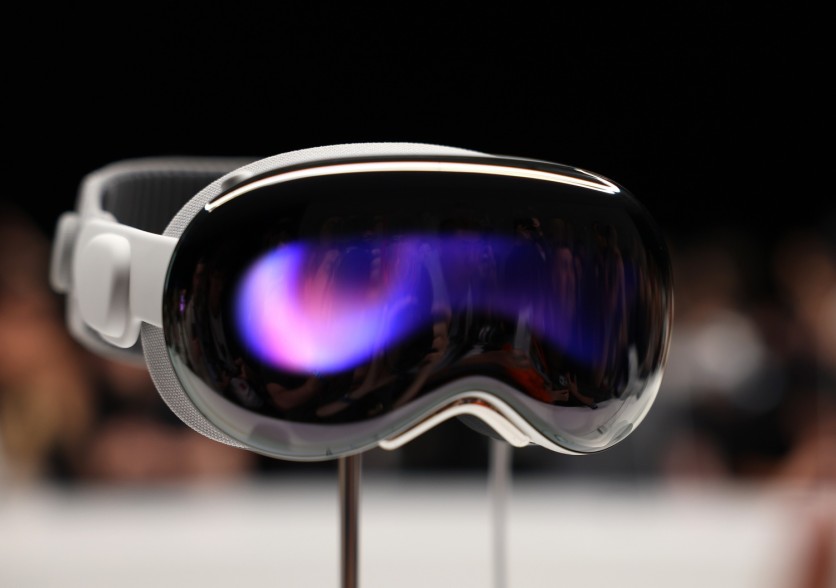
The screens of the Apple Vision Pro are remarkable, enabling spatial computing, but it's the technology housed within that truly works the magic.
When iFixit ripped open the Vision Pro and started poking around inside, it quickly became clear that the stars of the show were the two Sony-made screens that sat in front of your eyes. Each of these has a resolution similar to that of a 4K TV, only shrunken down to fit on a screen just under one-inch square. As you'd imagine, the pixels are tiny-you can fit fifty Vision Pro pixels into one iPhone 15 Pro pixel, and the iPhone's pixels are already pretty teeny. But why? What's all this for? And why is it essential to convincing spatial computing?
"The Apple Vision Pro isn't important just for the device itself, but for the spatial computing capabilities that come with it and the possibilities that may lay ahead for computing and new interfaces," Cathy Hackl, Co-CEO of spatial computing company Spatial Dynamics, told Tech Times.
Ready For Your Closeup
It's all about distance for the simple reason that when small things get closer, they're easier to see. If you're sitting in front of a computer or near a TV, put your face up to the screen (don't worry, your eyes won't turn to squares). Unless it's a super-high-res monitor, you can see the individual pixels. But of course, that doesn't matter because you usually view a computer screen from a few feet away and the TV from across the room.
This is why a 4K TV can dot its pixels across a leisurely 60-plus-inch screen and still look great, whereas a phone, which you view much closer, has to use way smaller pixels, and way more of them, even though its screen is comparatively tiny.
You can see where we're going with this. In a virtual reality headset, the screens are barely an inch from your eyes. In order to make the pixels invisible, those pixels have to be tiny.
The Vision Pro has a 3,386 PPI, which is frankly incredible. Compare this to the 12.9-inch iPad Pro, with 264 PPI, or the Meta Quest 3, with around 1218 PPI.
If you're only using the headset for gaming or watching movies, you can get away with fewer pixels per inch (PPI). With everything moving all the time, you don't notice the pixels, even though you can make them out if you try.
But for general computing tasks, you really want things to be sharp. Text, for example, is either illegible or painfully blurry in most VR headsets, whereas if you open up Safari in the Vision Pro, then you can read web pages just fine. They look great.
Pixels Per Degree
We're beginning to see why terms like PPI don't mean much in this realm. Numbers like "4K" are even worse because they only specify the number of pixels, not the space they occupy. You can have a 4K tablet and a 4K cinema screen, both supposedly with the same resolution.
That's why VR experts prefer to use pixels per degree (PPD) to measure display resolution. It considers not only the number of pixels and their spacing but also their distance from the eye. Using numbers from iFixit's excellent article, we can see that an iPhone 15 Pro at a foot away has the same PPD as a 65-inch TV at six-and-a-half feet-around 94 PPD. That's because one degree covers much more area the further away it gets.
But wait, there's more. Imagine that you have a Safari window open in the Vision Pro, and it's hanging in the air in front of you. Don't forget that even a big Safari window only takes up a small amount of the total display. The rest is used to show other windows and the room around you. So, in fact, the number of pixels available for actually displaying the contents of that floating Safari window, its text, and images is way less than the total "4K" available. And that's before we get to the part you look at.
"With human vision, when you're doing work [on a screen], your eyes stay within about 30 degrees. Beyond this, you turn your head," display technology expert Karl Guttag said during a Zoom interview.
And this is why the Vision Pro needs so many pixels crammed in there; it's not only showing you a screen. It's also showing the world around that screen, all of which has to look great. Viewed in this context, while the Vision Pro's screens are impressive, they're still only at the edge of what's needed to do this stuff properly.
In the future, experts say advancements in display technology will lead to even greater detail, significantly improving user comfort by reducing eye strain.
Charlie Sorrel has been writing about technology, and its effects on society and the planet, for over a decade. Previously, you could find him at Wired's Gadget Lab, Fast Company's CoExist, Cult of Mac, and Mac Stories. He also writes for his own site, StraightNoFilter.com.
ⓒ 2025 TECHTIMES.com All rights reserved. Do not reproduce without permission.




